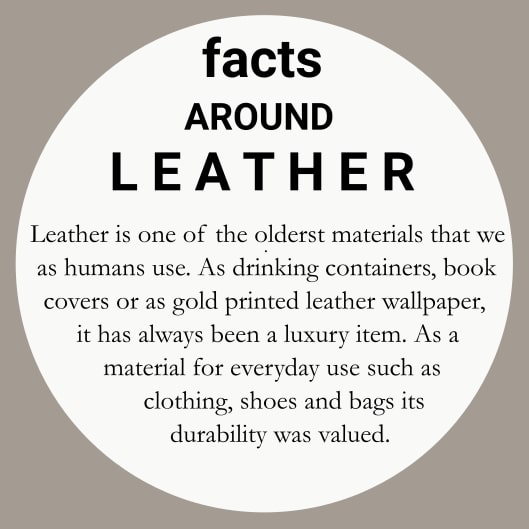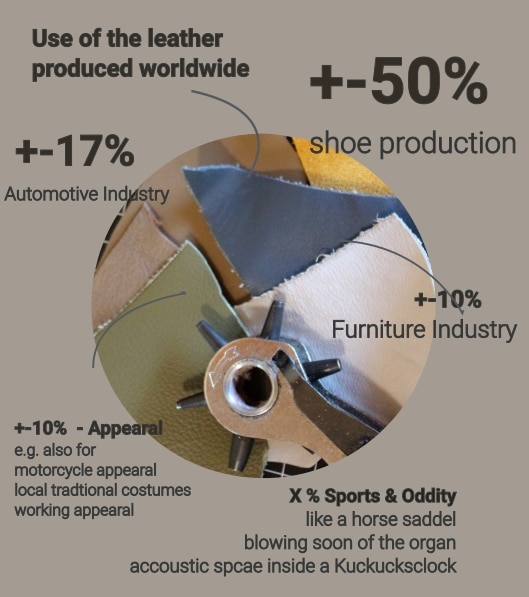
Glacéleather
This special leather was used for fine gloves. Since it had to be particularly soft and stretchy, it was usually made from goatskin. (glacé = French for shiny)
ALTERNATIVES to common industrial tanning+++
Leather can also be tanned using plants: with tannins from bark, leaves, peel or roots. For example, there is leather that is tanned with olive leaves, chestnuts or the tanning agent from the rhubarb root. Vegetable materials, some of which were already in use before industrialization.
Leather as a protective material!
Did you know that treated leather can become extremely stiff? Samurai armor and African shields were made of leather to protect against arrowheads and spears.
ALTERNATIVES to leather+++
There are new materials that show properties similar to leather, but are made from plant / organic materials in conjunction with a different substrate. The 'Apple leather' uses the solid residues that remain after squeezing the juice from fruit and vegetables. When dried, the leftovers are ground into a fine powder and processed further. A similar principle is used with 'Wine Leather'. Pineapple leaf fibers, parts of the Mexican nopal cactus, and mushroom leather are other alternatives to using animal skin.
Leather as a material...
Is very versatile. By tanning untreated animal skins, the skin is preserved. The properties of the skin such as suppleness, elasticity and water resistance are retained.
DID YOU KNOW...?!
That footballs have not been made of leather for a long time. The industry uses faux leather because it is lighter and has different flight characteristics.

click for further Wiasola pages:
the STORY about Daniela Damm - 'Fine Bag Maker'
+ 'Infos about the German Apprentice system to become a 'Bag Maker' under ARTISAN